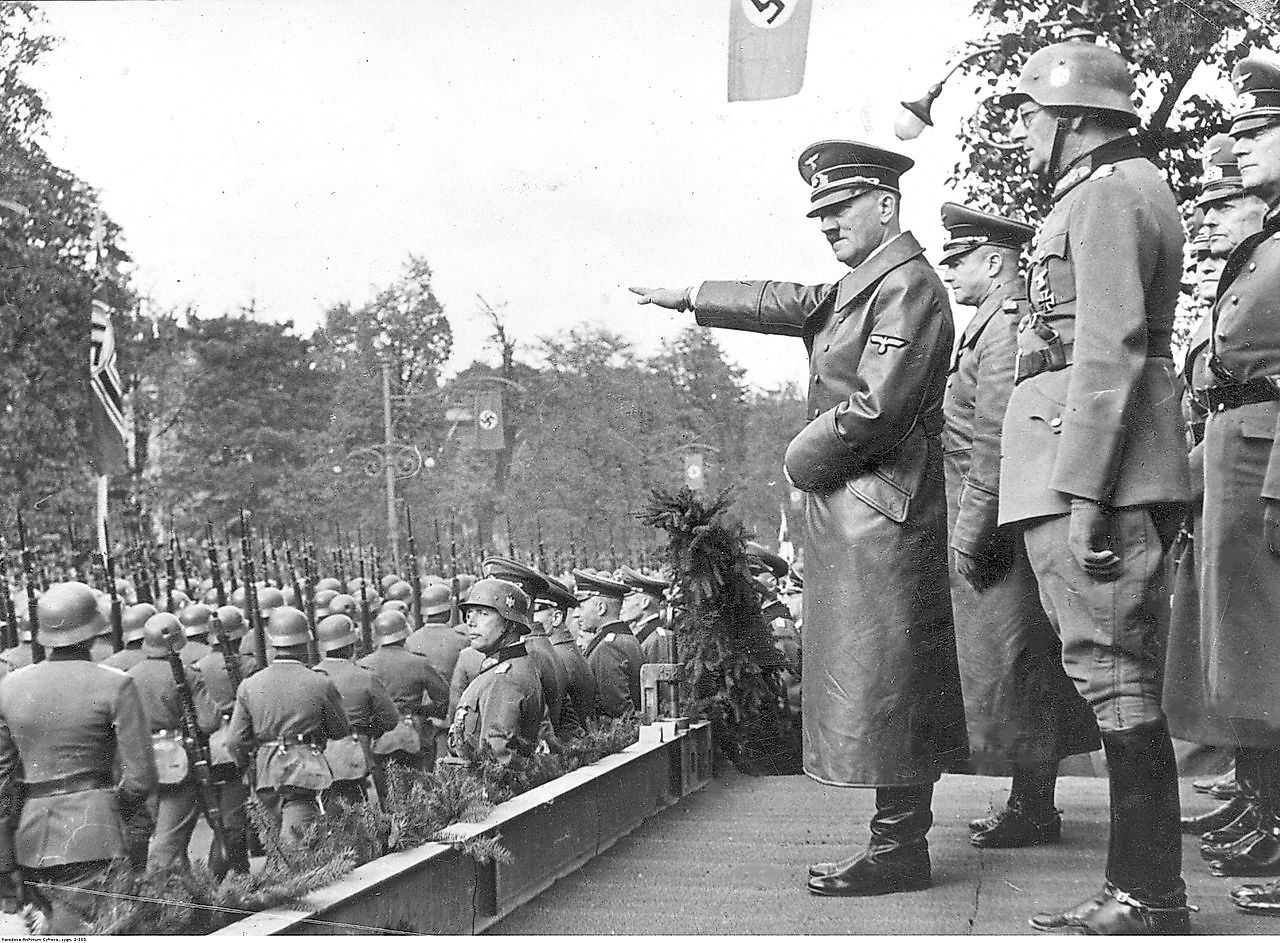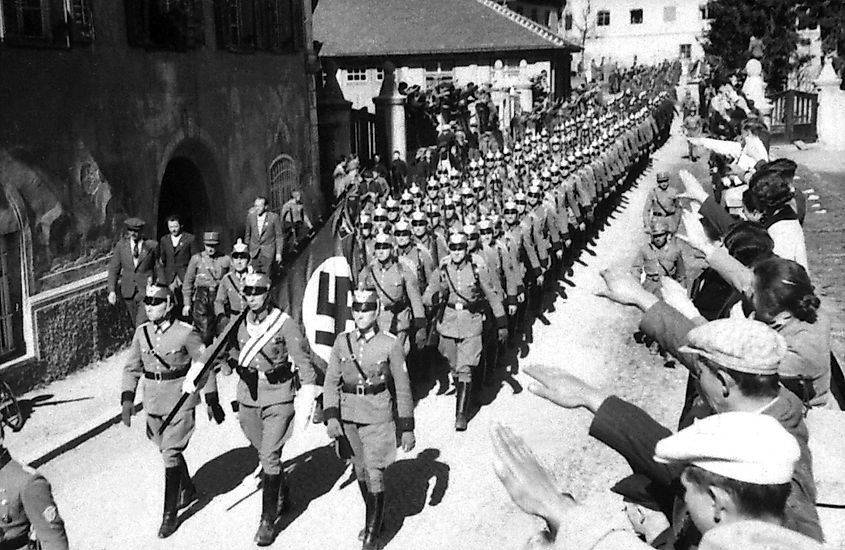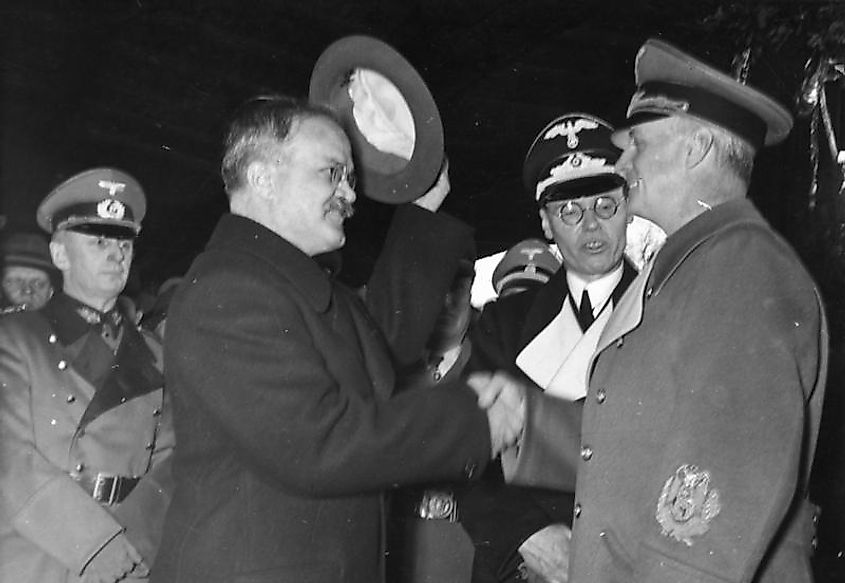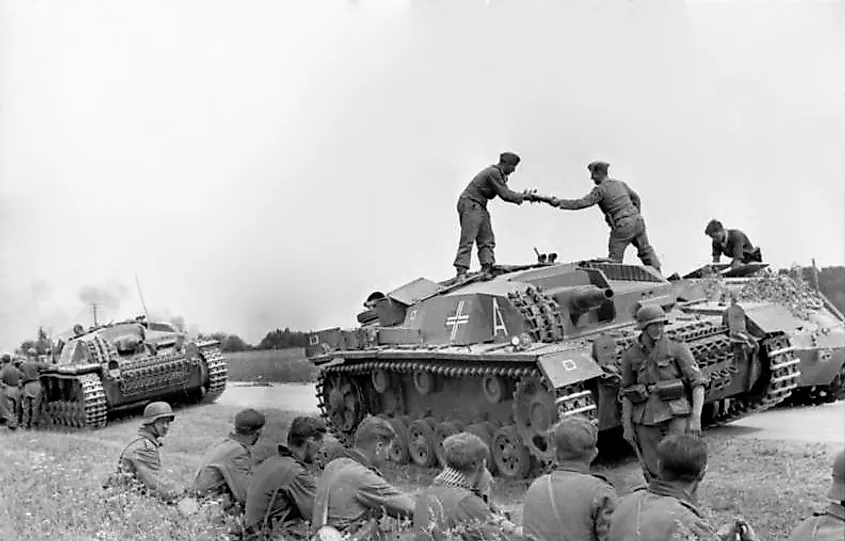
Invasion Of Poland
Germany invaded Poland in September 1939, marking the beginning of the Second World War. The invasion was fairly quick, with Polish defenses falling quickly to the German Army (the Wehrmacht). Nonetheless, understanding some of the details about the invasion and its leadup allow for a better comprehension of Nazi Germany and the Second World War in general.
German Aggression In The 1930s

Despite a non-aggression pact with Poland in 1934 and a rapprochement agreement with the United Kingdom (UK) in 1935, Adolf Hitler's foreign policy in the 1930s was generally antagonistic. For instance, Germany left the League of Nations in October 1933. This was followed by the reintroduced conscription in 1935, thereby dramatically increasing the size of Germany's army. Moreover, such an action explicitly violated the Treaty of Versailles. Also violating the treaty was Hitler's remilitarization of the Rhineland, a region of western Germany bordering the Netherlands, Belgium, Luxembourg, and France, on March 7, 1936.
Bolstered by the Allies' seeming unwillingness to stop his aggression, the Führer established a timeframe for war in a November 1937 meeting--putting it between 1943 to 1945 but stating that it could occur as early as 1938. Germany then annexed Austria in March 1938, followed by the Sudetenland, a Czechoslovakia region mainly containing German speakers, in October of that same year. The rest of Czechoslovakia was annexed in March 1939. Thereafter, Hitler set his sights on Poland. However, with the UK and France both guaranteeing war with Germany if it invaded Poland, this meant that Hitler needed to take additional measures before continuing his imperial ambitions.
The Molotov-Ribbentrop Pact

With the armed conflict now imminent and the Soviet Union being allied with the UK and France, Hitler needed to prevent a war on two fronts. This led to the Molotov-Ribbentrop Pact on August 23, 1939. Named after Soviet Foreign Minister Vyacheslav Molotov and German Foreign Minister Joachim von Ribbentrop, Germany, and the USSR agreed not to attack each other either and to remain in contact regarding affairs of common interest. But, most crucially for Hitler's expansionist goals, the pact also contained a protocol that divided Eastern Europe between Germany and the USSR. The Soviets were given the Baltic states (Estonia, Latvia, and Lithuania), Finland, Bessarabia (part of modern-day Ukraine and most all of modern-day Moldova), and eastern Poland, whereas Germany was given western Poland. Since war had not yet begun, however, this protocol was secret.
Germany Invades Poland

On September 1, 1939, 66 divisions of the German Army poured over the Polish border. The justification for this invasion was a supposed Polish attack on a German radio station in Gleiwitz. What actually happened was that the Nazis took an inmate's body from a nearby prison, dressed it in a Polish army uniform, and then left it in the radio station. Nonetheless, since Poland had "broken" the terms of the aforementioned 1934 non-aggression treaty, this supposedly necessitated war.
The invasion itself was perhaps the clearest example of the Wehrmacht's Blitzkrieg (in English, lightning war). This involved the Germans concentrating huge amounts of tanks, planes, and artillery in one area. Thereafter, the tanks drove through and rolled over everything, followed by the infantry completely clearing the area. Due to Polish defenses being very thinly spread, they were unable to adequately defend against this overwhelming firepower. None of this was helped by the Soviets also invading on September 17 and quickly occupying the east of the country (per the terms of the Molotov-Ribbentrop Agreement). Ultimately, most of the large-scale fighting was done within a month, with the last Polish units surrendering on October 6, 1939.
Aftermath

On September 3, 1939, the UK and France declared war on Germany. However, they failed to provide Poland with any meaningful support, contributing to its rapid fall. Following the eight-month phony war period, Germany continued its military conquests, quickly invading and occupying Norway, Denmark, the Netherlands, Belgium, and Luxembourg in the spring of 1940. By June, France had fallen. Finally, on June 22, 1941, Germany invaded the Soviet Union, betraying the Molotov-Ribbentrop Pact in an attempt to achieve Hitler's vision of Lebensraum (living space) in the east for Germans.
Germany's invasion of Poland marked the beginning of the Second World War in Europe. While the battle itself was quick, it followed years of leadup. Furthermore, its aftermath saw Germany take over most of Western Europe, followed by an invasion of the USSR.











